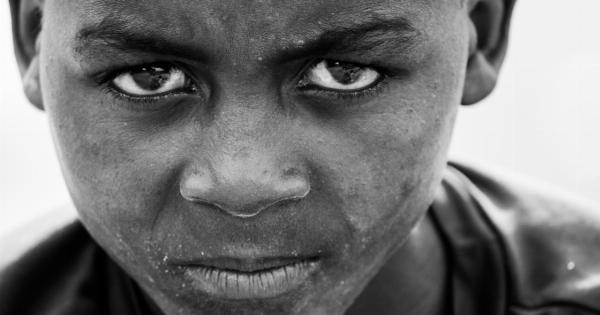Brain tumors are abnormal growths of cells in the brain. They can arise from different types of brain cells or from cells that invade from other parts of the body.
Brain tumors in children can present with a variety of symptoms, some of which can be quite unusual. One such uncommon symptom is uncontrollable laughter in a young girl. In this article, we will explore the case of a young girl who exhibited laughter as a symptom of a brain tumor and discuss the implications it had on her diagnosis and treatment.
A Case of Unexplained Laughter
Emily, a 7-year-old girl, had always been cheerful and full of laughter. However, her parents started noticing a change in her laughter patterns.
Instead of joyous and genuine laughter, Emily would burst into fits of uncontrollable laughter at odd times and without any apparent reason. Initially, her parents dismissed it as a behavioral quirk, but as the episodes increased in frequency and intensity, they became concerned and sought medical help.
Little did they know that this unusual symptom was an indication of a serious underlying condition.
Seeking Medical Evaluation
Emily’s parents took her to see their family doctor, who immediately referred her to a pediatric neurologist. The neurologist conducted a thorough physical examination and ordered a battery of tests, including an MRI of the brain.
The MRI revealed an abnormal growth in the frontal lobe of Emily’s brain, suggesting the presence of a brain tumor.
Understanding Brain Tumors
Brain tumors can be classified into two categories: primary and secondary.
Primary brain tumors originate in the brain, while secondary brain tumors, also known as metastatic brain tumors, occur when cancer cells from other parts of the body spread to the brain. In Emily’s case, the tumor was classified as a primary brain tumor, which meant that the tumor originated from cells within her brain.
Types of Brain Tumors in Children
Brain tumors in children can vary in type and location. Some of the common brain tumors seen in children include:.
- Medulloblastomas: These are fast-growing tumors that usually develop in the cerebellum, the area of the brain responsible for coordination and balance.
- Gliomas: Gliomas are a type of tumor that arises from the glial cells in the brain. They can occur anywhere in the brain and can be further classified into different subtypes, such as astrocytomas and ependymomas.
- Ependymomas: Ependymomas arise from the cells that line the ventricles, which are fluid-filled spaces within the brain.
- Craniopharyngiomas: These tumors develop near the pituitary gland, which is responsible for hormone regulation.
The Link Between Brain Tumors and Unusual Symptoms
Brain tumors can present with a wide range of symptoms depending on their location, size, and aggressiveness. In the case of Emily, the tumor was situated in the frontal lobe of her brain, which is responsible for controlling emotions and behavior.
The tumor was likely interfering with the normal functioning of this area, leading to the unusual outbursts of laughter.
Diagnosis and Treatment
Once the brain tumor was diagnosed, Emily’s medical team discussed the treatment options with her parents.
The treatment plan typically depends on several factors, including the type and location of the tumor, its size, and the overall health of the patient. The commonly used treatment modalities for brain tumors in children include:.
- Surgery: In many cases, surgery is the first line of treatment to remove as much of the tumor as possible. However, the extent of surgery may vary depending on the tumor’s location and potential risks involved.
- Radiation therapy: Radiation therapy uses high-energy X-rays or other types of radiation to kill cancer cells or shrink tumors. It is often used in conjunction with surgery or as the main treatment when complete surgical removal is not possible.
- Chemotherapy: Chemotherapy involves the use of drugs to kill cancer cells. It can be administered orally, intravenously, or directly into the cerebrospinal fluid.
Recovery and Follow-Up
Following Emily’s surgery and subsequent treatments, her laughter episodes gradually subsided.
Emily’s parents noticed a significant improvement in her overall well-being, and subsequent imaging tests showed a reduction in the size of the tumor. However, she continued to receive regular follow-up appointments with her medical team to monitor her progress and ensure the tumor did not regrow.
The Importance of Recognizing Unusual Symptoms
Emily’s case highlights the importance of recognizing and investigating unusual symptoms, even if they seem unrelated or benign.
Unexplained laughter may sound harmless, but in the context of other concerning factors, it can serve as a red flag for an underlying medical condition, such as a brain tumor. Being vigilant and seeking timely medical evaluation can significantly impact the outcome and treatment of such conditions.
Conclusion
Unusual symptoms can sometimes be the key to uncovering serious medical conditions in children. Emily’s story emphasizes the importance of paying attention to such symptoms and seeking prompt medical evaluation.
Had her parents not taken her laughter episodes seriously, the diagnosis of a brain tumor may have been delayed, leading to potentially worse outcomes. Early detection and intervention play a crucial role in improving the prognosis for children with brain tumors.
By raising awareness about unusual symptoms like laughter in the context of neurological abnormalities, we can contribute to early diagnosis and effective treatment.




























